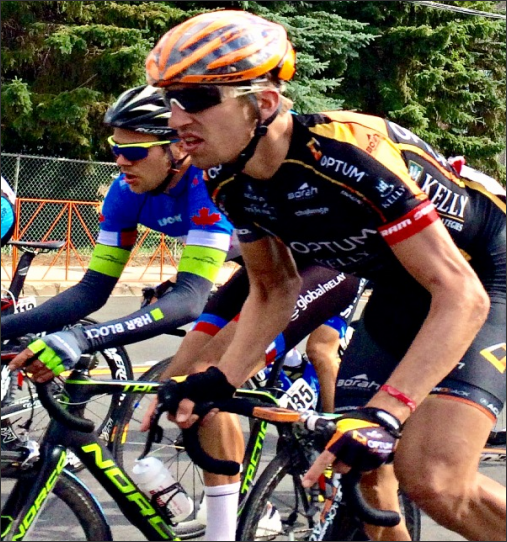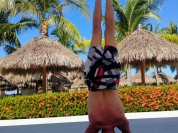Wrist decompression program by Majo

Are your wrists compressed and affecting your sport performance or daily activities?
Perhaps not. If you participate in sports like road or mountain biking, alpine skiing, weight lifting, or gymnastics, where loads are repetitively applied to your wrists, you may wonder. A qualified health practionner may help you clarify the source of some deficiencies in your body mechanics. In my practice I use NeuroKinetic Therapy® (NKT) which I find extremely helpful in discovering the root cause of my clients chronic aches, pains, and muscle imbalances. Using a combination of posture, gait, and specific movement pattern observations it's possible to discover existing compensation systems and understand the reasons for their dysfunctions.
Here's an example of how things go in my office: a mountain bike racer developed a synovial cyst on the back of her wrist a month ago that has now become painful — not a good sign, something is angry! Testing her it appears that she relies on the compensation of the left side of her neck and her hips while pulling her right knee up and pushing her left foot down harder. Her leg adductors were also holding extra tension for her core and left shoulder girdle needing to stabilize the bike when her right knee comes up. Finally I could test that her wrist was using compression to increase bike control for the underworking shoulder muscles, therefore the irritation, inflammation and pain.
After assessing, treating, assessing and so on she went from having a lot of difficulty hoding her arm flexed at a right angle standing straight (outside of her biking position) to having no problem locking up the neural command and having no pain while doing so (as opposed to before).
Now to engrain more efficient motor patterns, I sent her home with NKT homework which consists of a set of very specific sequences of exercises to release the over-tensed structure and re-activate the underworking ones. To prevent wrist compression injuries here's a little program you can try easiliy anywhere you are, taking short breaks at work, or while watching TV. Please note this is not NKT homework, nor a subtitute physiotherapy program, but an "at your own risk" soft tissue release routine to help relieve tension in your hands, wrists and forearms.
Blog by: Majorie Lauzon
Copyright 2015
References: .
- David Weinstock, NeuroKinetic Therapy: An Innovative Approach to Manual Muscle Testing, North Atlantic Books, 2010
- Ann Frederick & Chris Frederick, Stretch to Win: Flexibility for improved speed, power and agility, Human Kinetics, 2006
- Aaron L. Mattes, Active Isolated Stretching: The Mattes Method, Published by Aaron L. Mattes, 2000
- Theresa Schmidt, Myofascial Release: Art of the soft Tissue Mobilization, Cross Published by Country Education & Theresa Schmidt, 2005
- Jim Bilotta, Soft Tissue Release: Practical guide for health care professionals, Published by Jim Bilotta, 2006
Posted: January 29, 2015 In: Cycling, Flexibility Training, Injury Prevention, Skiing, Strength Training

